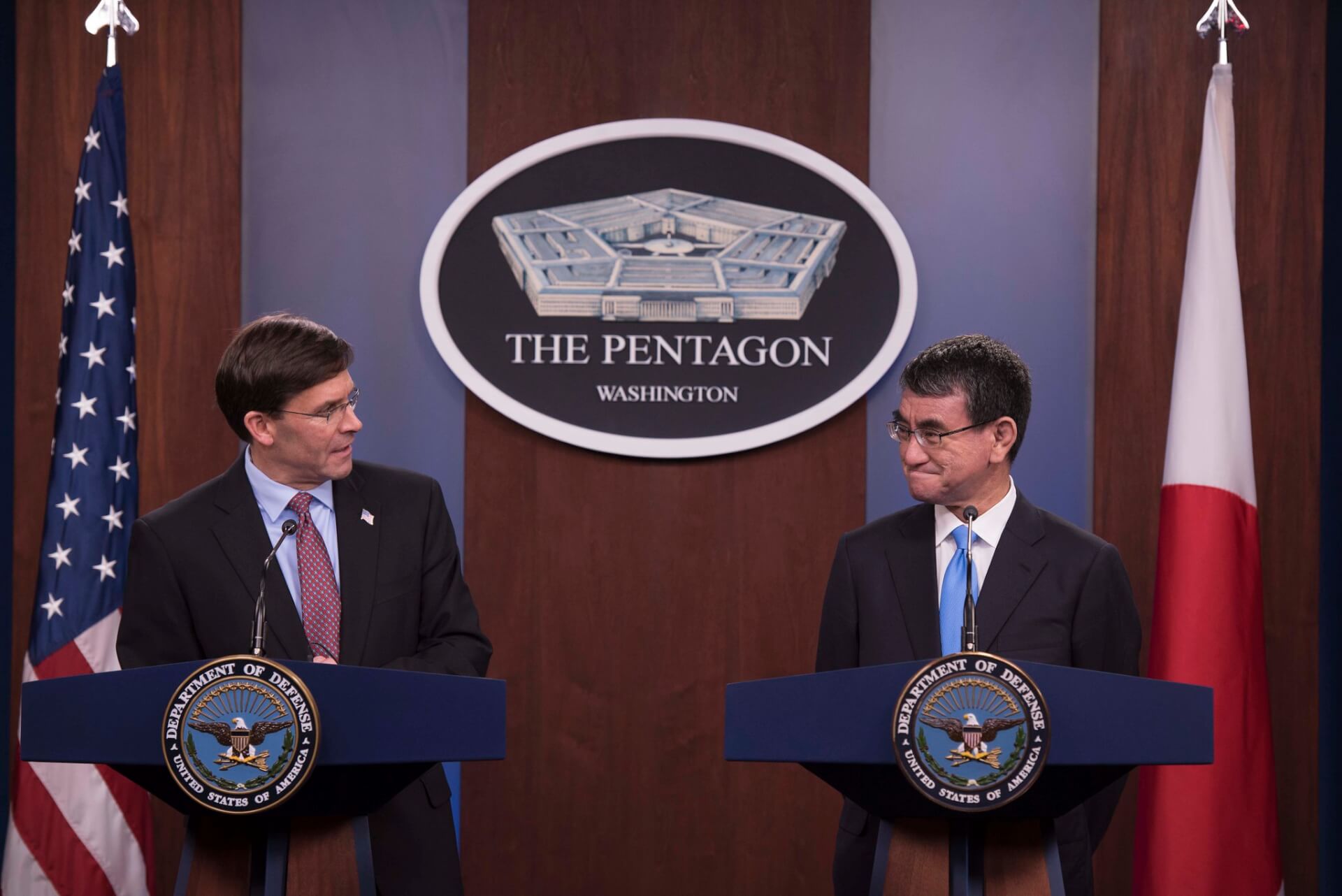In his first international trip since the COVID-19 pandemic, Japanese Defense Minister Tao Kono will be traveling to Guam later this week to meet his American counterpart Mark Esper, where dealing with China’s assertiveness in the East and South China seas will be a top priority. The agenda will also include talks on Japan’s nuclear deterrence against North Korea’s nuclear missile threats.
The US recently revised position on the South China Sea (SCS) dispute, with Secretary of State Mike Pompeo asserting that Washington will not allow Beijing to treat the seas as its “maritime empire”, creating further rifts between the two states. The US is said to have deployed B-1 lancer bombers, dubbed the “Bone”, on Guam, signaling to Beijing its intent of guaranteeing net security to countries in the region. The “Bone” can deliver up to two dozen stealthy AGM-158 Joint Air-to-Surface Standoff Missiles (JASSMs).
Similarly, Japan is ramping up its confrontation with China in the East China Sea (ECS) by vehemently denouncing Beijing for sending vessels near the disputed Senkaku/ Diaoyu Islands. In July, Japan claimed that Chinese ships had entered its waters for eleven days, and, in response, announced that it would “immediately scramble fighter jets” against the launch of Chinese planes. In the same month, Japan’s defense white paper accused China of “continuing to attempt to alter the status quo in the East China Sea and the South China Sea” and for the first-time described China’s actions as “relentless.”
In addition to deploying strategic missiles, the US is also contemplating opening its Guam air-base for fighter jet pilots from Japan, India, and Australia to step up military cooperation between the four countries against China. As part of the upcoming discussions, Kono and Esper are likely to confirm their joint policy on promoting cooperation to further a free and open Indo-Pacific region.
According to reports, Kono and Esper will conduct talks on Japan’s new missile defense program. The new program will replace the Aegis Ashore land-based missile interceptors in the Yamaguchi and Akita prefectures of Japan. The Aegis Ashore system was abruptly scrapped by Japan in June, citing difficulty in picking alternate sites following local protests. Prior to altogether scrapping the interceptor system, Japan’s Defense Ministry also halted the deployment of two US-made batteries intended for the Aegis, pointing to “technical problems, increasing costs, and strong local opposition”. In 2017, Tokyo decided to install two Aegis Ashore batteries after North Korea launched a series of ballistic missiles. Locals opposed the Aegis system due to health concerns emanating from the radar’s electromagnetic waves.
US-Japan defense relations have experienced ups and downs in the recent past, owing to the Trump Administration pushing Japan to pay more to maintain US troops on its soil. Currently, Japan spends about $2 billion on stationing US military personnel station in Japan. Tokyo also compensates localities that host the US military. In his memoir, former national security adviser John Bolton claimed that, in 2019, President Trump asked Japan to pay four times the current amount, or about $8 billion, for US forces stationed there. The Japanese government denied Bolton’s claims and maintained that negotiations “have not even started”. Japan currently hosts approximately 55,000 US military personnel. Even though challenges exist in the defense relations between the long-term allies, avenues for cooperation continue to prevail, particularly in light of China’s growing perceived belligerence in the region.
Japan-US Defence Chiefs to Meet in Guam, China and North Korea to Top Discussion Agenda
The two allies will discuss concerns on Chinese belligerence in East and South China Sea.
August 24, 2020

Defense Secretary Mark T. Esper and Japanese Defense Minister Tao Kono during a bilateral press briefing at the Pentagon, in January 2020. SOURCE: DEPARTMENT OF DEFENSE
